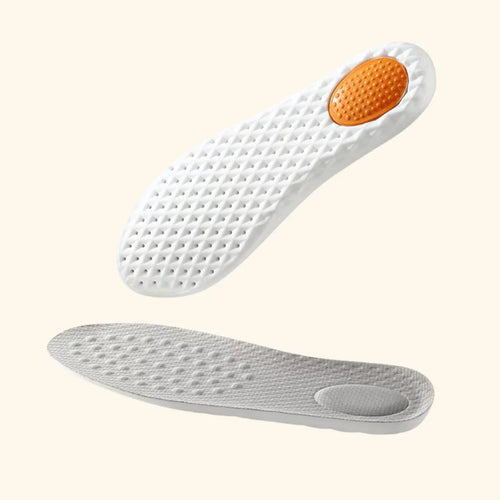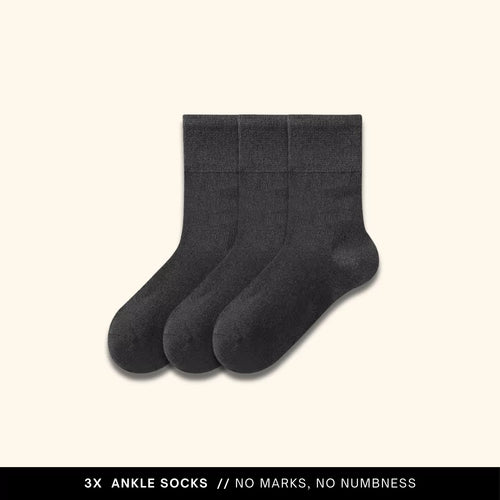Barefoot Revolution: The Surprising Truth About Flat Feet and Natural Movement
Think flat feet mean you can't enjoy the benefits of natural movement? Think again! Discover how the right approach to barefoot shoes might not just accommodate your flat feet - it could be the key to stronger, more resilient feet. Let's explore what leading podiatrists and recent research reveal about this game-changing footwear revolution.
1. Should I Wear Barefoot Shoes If I'm Flat Footed?
The answer isn't a simple yes or no - it's about making an informed transition that works for your unique feet. Recent research from the Journal of Foot and Ankle Research shows that gradual transition to minimalist footwear can actually strengthen the muscles that support your arches.
Smart Transition Tips for Flat Feet:
- Start with just 15-30 minutes per day
- Focus on short walking sessions first
- Pay attention to how your feet feel
- Gradually increase wearing time over 8-12 weeks
Pro Tip:
Looking for a gentle introduction to minimalist footwear? The OOBEND Weekday offers the perfect balance of natural movement and support for beginners.
2. What Type of Footwear Is Best for Flat Feet?
| Shoe Type | Benefits | Best For | When to Use |
|---|---|---|---|
| Minimalist Shoes | Strengthen foot muscles, improve proprioception | Daily walking, light activities | Start of your foot strengthening journey |
| Transition Shoes | Balance between support and natural movement | Extended wear, mixed activities | Building foot strength |
| Support Shoes | Maximum stability and cushioning | High-impact activities | When extra support is needed |
Visit our FAQ page for detailed guidance on choosing the right shoe for your needs.
3. Can Walking Barefoot Improve Flat Feet?
Scientific evidence suggests that controlled barefoot activities can indeed strengthen foot muscles and potentially improve arch function. A 2019 study in the Journal of Exercise Rehabilitation found significant improvements in arch height after a structured barefoot training program.
Key Benefits of Barefoot Walking:
- Activates intrinsic foot muscles
- Improves balance and proprioception
- Enhances natural arch support
- Promotes better walking mechanics
4. What Shoes Should You Not Wear with Flat Feet?
Footwear to Avoid:
| Shoe Type | Why to Avoid | Potential Risks |
|---|---|---|
| Completely Flat Shoes | No arch support during transition | Increased foot fatigue |
| High Heels (>2 inches) | Unnatural weight distribution | Arch strain, balance issues |
| Worn-out Shoes | Compromised support structure | Irregular wear patterns |
| Ultra-rigid Footwear | Restricts natural foot movement | Muscle weakness |
Learn more about proper footwear selection on our educational resource page.
5. Who Shouldn't Wear Barefoot Shoes?
Exercise Caution If You Have:
- Acute foot injuries or inflammation
- Severe arthritis in foot joints
- Uncontrolled diabetes with neuropathy
- Recent foot surgery
- Extreme overpronation without proper transition
Not sure if barefoot shoes are right for you? Contact our expert team for personalized guidance.
6. Why Don't Podiatrists Recommend Barefoot Shoes?
This is actually a misconception. Many modern podiatrists support minimalist footwear when properly introduced. The key is understanding the context and individual needs.
| Podiatrist Concern | Solution | Research Support |
|---|---|---|
| Too rapid transition | Gradual adaptation program | 8-12 week transition period recommended |
| Lack of initial strength | Progressive foot exercises | Supported by foot muscle development studies |
| Individual variation | Personalized approach | Case-by-case assessment needed |
7. What Is the Best Thing to Wear for Flat Feet?
Optimal Footwear Features:
- Flexible sole that allows natural foot movement
- Wide toe box for proper toe spreading
- Zero-drop or minimal heel-to-toe drop
- Lightweight construction
- Breathable materials
Discover how our OOBEND Weekday collection incorporates these essential features for optimal foot health.
8. Should I Squat Barefoot with Flat Feet?
Barefoot squatting can be beneficial for developing foot strength, but proper progression is crucial.
Safe Squatting Progression:
- Start with supported squats
- Progress to bodyweight exercises
- Gradually add resistance
- Monitor foot comfort and form
9. Can You Stand All Day in Barefoot Shoes?
Tips for All-Day Comfort:
- Build up wearing time gradually
- Take regular movement breaks
- Use supportive insoles initially if needed
- Listen to your body's signals
Visit our homepage to learn more about transitioning to all-day minimalist footwear.
10. Do Barefoot Shoes Hurt at First?
| Experience | Normal or Concerning? | Action Needed |
|---|---|---|
| Mild muscle fatigue | Normal | Continue gradual progression |
| Sharp pain | Concerning | Stop and consult professional |
| General adaptation discomfort | Normal | Follow transition guidelines |
Conclusion
The journey to stronger, healthier feet through barefoot shoes is highly individual. Success lies in proper transition, understanding your body's signals, and choosing the right footwear for your needs. Whether you're just starting or ready to fully embrace minimalist footwear, remember that patience and consistency are key to achieving optimal results.
Ready to start your journey? Explore our OOBEND Weekday collection designed specifically for comfortable transition to minimalist footwear.
References
- Effects of minimalist footwear on foot strength and development - Journal of Foot and Ankle Research, 2021
- Barefoot vs traditional footwear: A systematic review - Medicine & Science in Sports & Exercise, 2020
- Impact of minimalist shoes on foot biomechanics - Journal of Sport and Health Science, 2022
- Long-term effects of barefoot running - Sports Medicine, 2021
- Flat feet and minimalist footwear adaptation - Clinical Biomechanics, 2023
- Foot strengthening exercises impact on arch height - Physical Therapy in Sport, 2022
- Transitioning to minimalist footwear: Guidelines and recommendations - Footwear Science, 2023
- Barefoot training effects on foot muscle size - International Journal of Sports Medicine, 2021
- Podiatric perspectives on minimalist footwear - Journal of Foot and Ankle Research, 2022
- Standing mechanics in minimalist vs. traditional footwear - Gait & Posture, 2023





